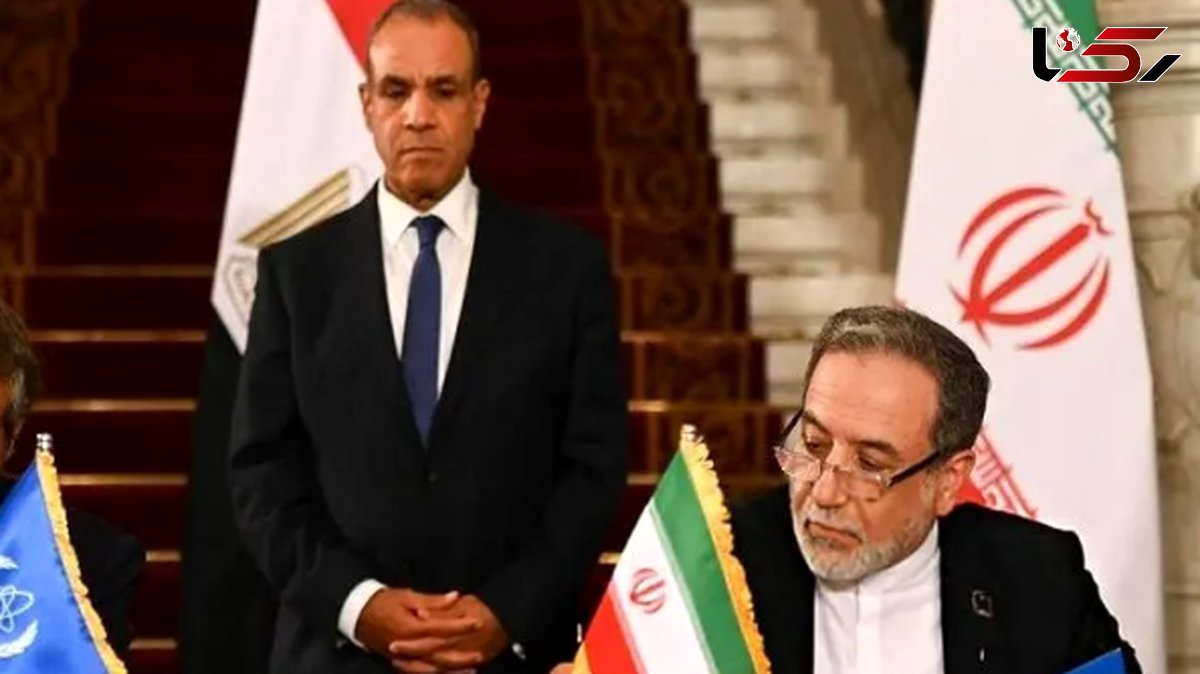Iran-IAEA Agreement: What Changed and Why?
Rokna Political Desk: Iran and the International Atomic Energy Agency (IAEA) reached an agreement, mediated by Egypt, at the height of nuclear tensions, amid U.S. and European threats and discussions of returning sanctions, which prompted Iran to pursue tension management.

According to Rokna, despite unprecedented tensions and the worst confrontation in the 25-year history of the nuclear dispute, Iran and the IAEA ultimately reached an agreement. The accord was achieved through Egyptian mediation, with Iran’s Foreign Minister (Araqchi) and the IAEA Director General (Grossi) signing the new agreement in Cairo in the presence of Egypt’s Foreign Minister.
Iran and the IAEA had previously reached peak tensions and threats of severing relations multiple times, yet they always returned to agreement, except for one instance during Ahmadinejad’s presidency. At that time, the Iranian file was referred to the UN, and severe sanctions were imposed on Tehran, creating nearly two decades of deadlock.
Even during the 12-day war, despite accusations and unprecedented tensions toward the IAEA, it was clear that both sides would eventually reach an agreement, because:
-
The best and least costly path for Iran and the IAEA is agreement. No other low-cost option exists.
-
Non-agreement with the IAEA means maximum pressure, sanctions, war, and international isolation.
-
One cannot be a member of the IAEA and simultaneously violate its regulations.
-
Leaving the IAEA would mean moving toward nuclear weapons, with the negative consequences already noted.
-
One cannot pursue peaceful nuclear activities while being outside the IAEA or in constant conflict with it.
-
Iran cannot remain outside the IAEA like North Korea, Pakistan, Israel, or India, as it does not have nuclear weapons and insists it is not pursuing them.
-
-
In a context of tension with the U.S. and Europe, in wartime conditions, under the “snapback” mechanism, and with European threats of returning UN sanctions, escalating tensions with the IAEA does not serve Iran’s interests.
-
Reaching an agreement with the IAEA is better, easier, and less costly than agreements with countries. Had Iran initially reached a deal with the IAEA, nuclear negotiations with other countries, the JCPOA, and the subsequent complications could have been avoided.
-
The severe tensions between Iran and the IAEA resulted from Israeli and U.S. military attacks on Iran’s nuclear facilities during the 12-day war. It sent a clear message that bombing Iran’s nuclear centers comes at a cost. While some considered the threats against the IAEA and its Director General final, believing relations would be severed and threats carried out, the reality is that even at peak tension, relations are never fully broken, and opportunities for return and agreement always exist, however limited.
Point 1: Diplomatic relations between Iran and Egypt are formally severed, yet Cairo successfully mediated between Iran and the IAEA. Iran’s Foreign Minister and the IAEA Director General negotiated in Cairo and reached an agreement.
This indicates an unprecedented improvement in Iran-Egypt relations post-revolution, despite the absence of formal diplomatic ties. There is no embassy or ambassador, yet high-level contacts between Tehran and Cairo continue. Although Egypt still does not issue tourist visas to Iranians, Iran has lifted visa requirements for Egyptian citizens. Successful Egyptian mediation between Iran and the IAEA raises hopes for further normalization of relations and the eventual reopening of embassies. Previously, despite the absence of U.S.-Iran diplomatic ties, former U.S. President Donald Trump successfully mediated between Iran and Israel, leading to a 12-day ceasefire.
Point 2: Historically, mediators in Iran’s foreign policy have included the U.S., Israel, the European Union, nuclear issues, and prisoner exchanges. The IAEA is now added to this list. The narrower the scope of mediation, the more effective it tends to be.
Send Comments